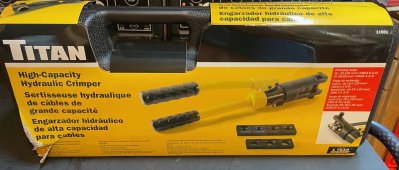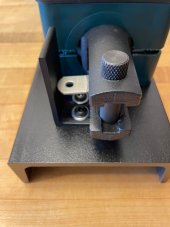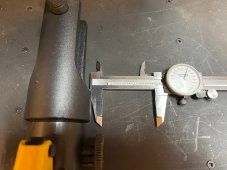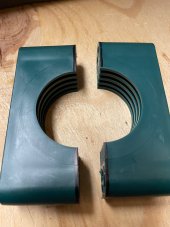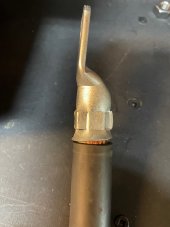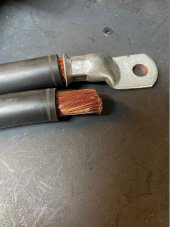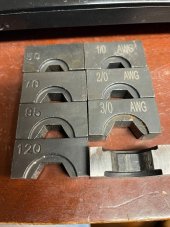This is my experience thus far with the Titan 11981 Hydraulic Crimper.
I settled on this one because it had the D frame, as opposed to the C frame, which I had heard of the C frame cracking its casting.
There are 8 hex die sets in the case, which will cover the bigger gauge wires.
I have a ratcheting crimper for all the smaller stuff.
Randall
I settled on this one because it had the D frame, as opposed to the C frame, which I had heard of the C frame cracking its casting.
There are 8 hex die sets in the case, which will cover the bigger gauge wires.
I have a ratcheting crimper for all the smaller stuff.
Randall



